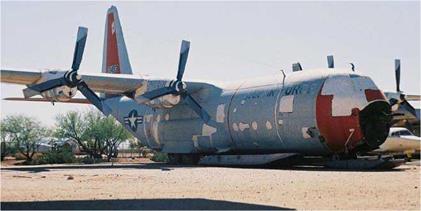Lockheed C-130 Hercules
It is interesting to note, the Lockheed YC-130A Hercules prototype and also the first ten production models were equipped with Curtiss-Wright, three-blade, electric propellers.
Powered by the Allison T56 turboprop engines, the props rotated at a constant 1108 RPM, the thrust was adjusted by the prop’s blade angle. However, a problem with the electrically operated governor caused the CSU to overcompensate or hunt in either direction. This resulted in uneven thrust being produced and caused the aircraft’s nose to yaw from side to side. On occasions the hunting was so bad the propeller’s reduction gearbox would overheat and cause sever damage requiring an in-flight engine shutdown and the propeller to be feathered. The problem with the Curtiss-Wright props was eventually corrected, but not before a change was made to hydraulic CSU’s made by Aero Products, Allison’s subsidiary company. Subsequent Hercules models from the C-130B onwards were fitted with Hamilton Standard three-blade, and later four-blade propellers. In addition, to follow the trend of modern turboprop aircraft, the latest C-130J models have a new type of turboprop engine, an Allison AE 3100 D3 flat rated to 4591 SHP, driving six-blade composite props.
|
The Lockheed C-130D Hercules was powered by three-blade propellers. This aircraft is a resident of the Pima Air & Space Museum, Tucson. |












